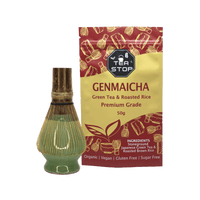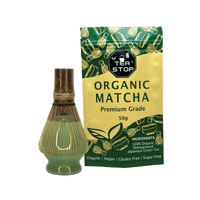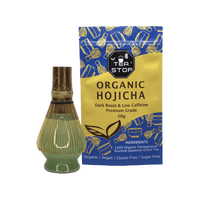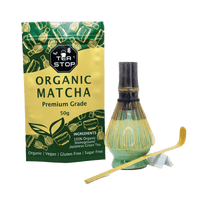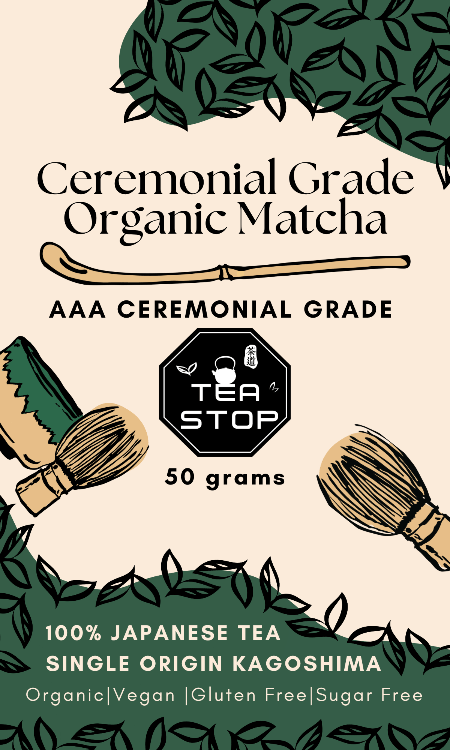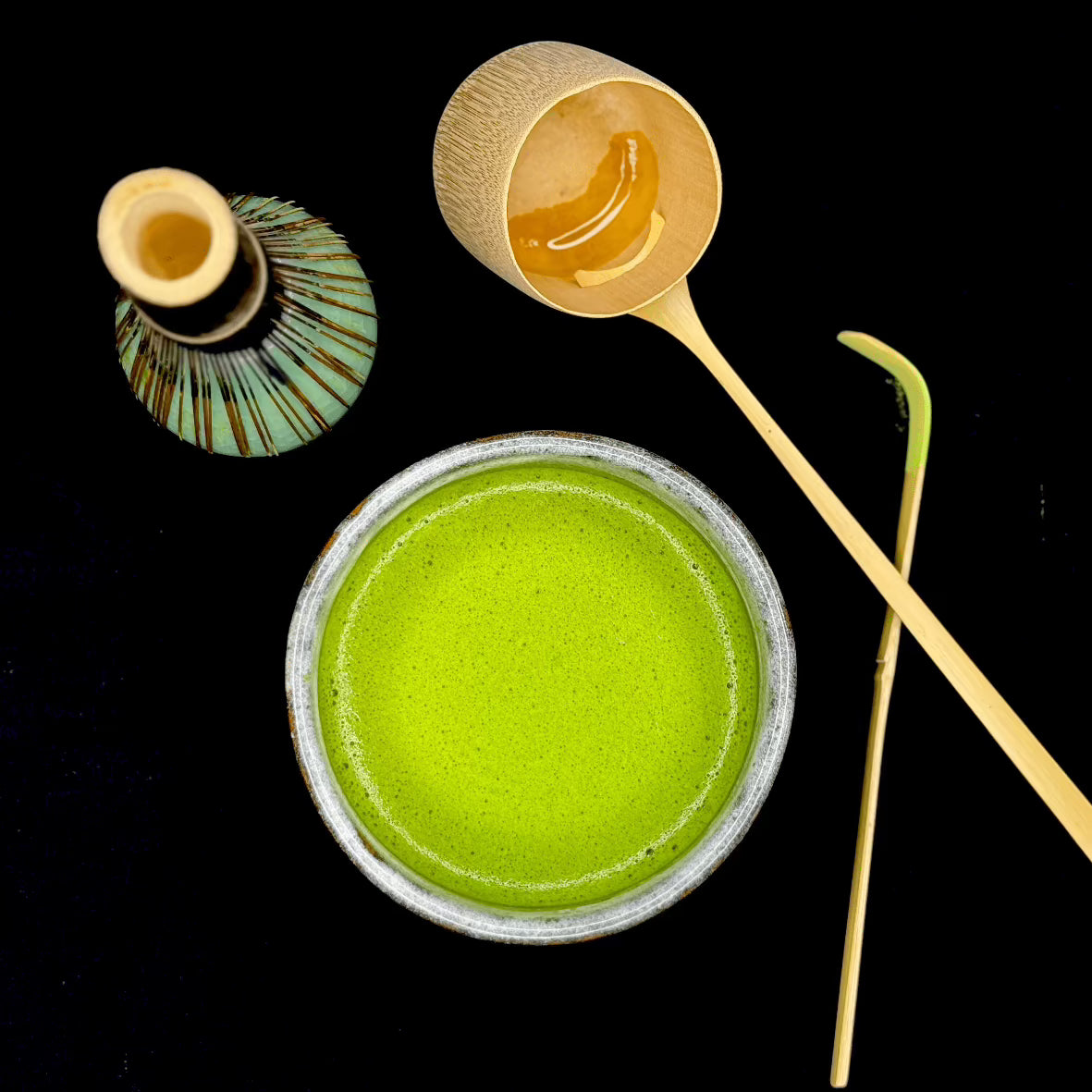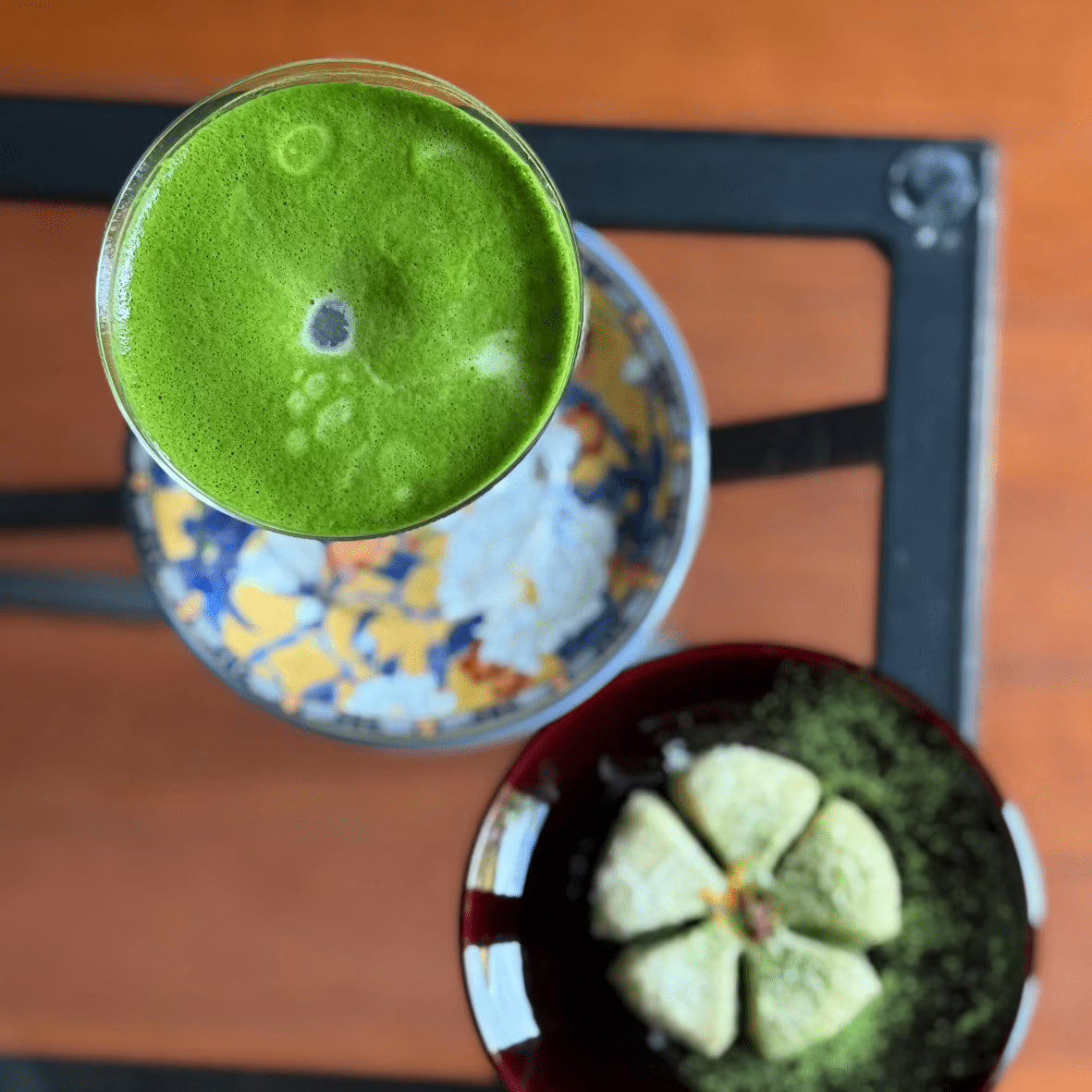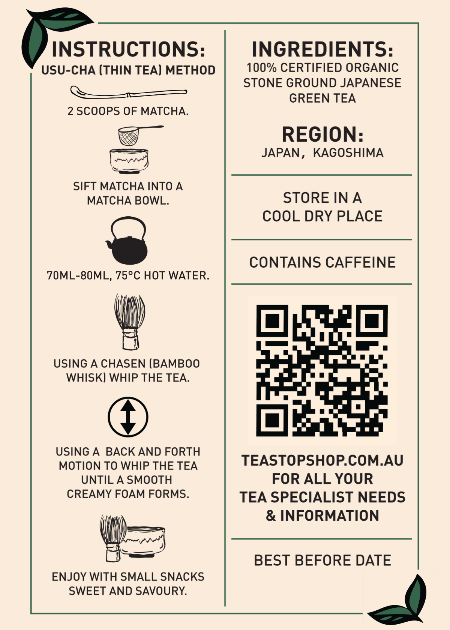
What Is Ceremonial Grade Matcha and Why Does It Matter?
Share
atcha is a finely ground powder made from specially grown green tea leaves. It has captivated tea enthusiasts around the world. With its origins rooted in Japanese tradition, matcha comes in various grades, each offering unique flavors and qualities. Among these, ceremonial grade matcha stands out as the pinnacle of quality.
The growing popularity of matcha in recent years has led to an increased demand for high-quality ceremonial-grade matcha. This premium matcha is celebrated for its vibrant emerald green color, fine texture, and rich flavor profile, making it a favorite among connoisseurs and those seeking an authentic tea experience.
Understanding the unique characteristics and benefits of ceremonial grade matcha can significantly enhance your tea-drinking experience. By diving into its distinctive qualities, you can make informed choices when purchasing matcha, ensuring you enjoy the best that this revered tea has to offer.

What Is Ceremonial Grade Matcha?
Ceremonial grade matcha is the highest quality matcha, deeply rooted in Japanese tradition. It comes from Japan and is made specifically for traditional tea ceremonies, representing the best in purity and taste among the different grades of matcha.
Distinctive Characteristics
1. Color
One of the most striking features of ceremonial grade matcha is its vibrant emerald green color. This hue indicates a high concentration of chlorophyll and a meticulous cultivation process.
2. Texture
The powder is exceptionally fine, giving it a silky smooth texture that dissolves effortlessly in water.
3. Flavor Profile
Ceremonial grade matcha offers a smooth and creamy flavor with natural sweetness and umami. Its taste is delicate yet complex, devoid of bitterness, making it ideal for pure consumption.
Connection to Traditional Japanese Tea Ceremonies
Ceremonial grade matcha's exclusivity lies in its use during traditional Japanese tea ceremonies. These ceremonies celebrate mindfulness and respect, often involving intricate rituals that highlight the tea's preparation and consumption.
Cultivation Practices
- First-Harvest Leaves: Only the youngest, tender leaves are harvested during the first flush of spring, ensuring optimal flavor and nutritional content.
- Shade-Grown Leaves: Tea plants are shaded before harvesting to increase chlorophyll levels and enhance amino acids, contributing to the rich flavor and vibrant color.
Understanding what ceremonial grade matcha is helps appreciate its cultural significance and superior quality. Choosing this high-quality matcha can elevate your tea-drinking experience, allowing you to savor every sip with mindful intention.
The Production Process Behind Ceremonial Grade Matcha
The journey from tea garden to chawan is a practice steeped in intention and care. Every step of the matcha production process shapes the colour, flavour, and aroma that define ceremonial grade matcha.
Meticulous Cultivation: Shade-Grown Tea Leaves
- Shading the Fields: Weeks before harvest, tea gardens are shaded using bamboo mats or cloths. This natural reduction in sunlight encourages the plants to produce higher levels of chlorophyll and L-theanine, deepening the leaves’ emerald hue and lending matcha its mellow umami character.
- Encouraging Amino Acids: By limiting photosynthesis, shading also enhances amino acid content, most notably L-theanine, which balances catechins (responsible for bitterness) and creates a smooth, rounded finish with gentle sweetness.
Harvesting the First Flush: Tender Spring Leaves
- First-Harvest Matcha: Only the youngest, most tender leaves at the very top of each Camellia sinensis plant are selected during spring’s first flush. These supple leaves hold the highest nutrient concentration and deliver an unparalleled softness in both taste and texture.
- Gentle Hand-Picking: Skilled hands carefully pluck each leaf to avoid bruising. Damaged leaves can oxidize quickly, diminishing vibrancy and introducing unwanted astringency.
Traditional Stone Grinding: Craft Meets Precision
- Steamed and Dried: Immediately after harvest, leaves—now called tencha—are lightly steamed to halt oxidation, preserving their vivid color and fresh aroma. They are then gently dried without rolling.
- Stone-Ground Matcha: In celebrated regions like Uji and Kyoto, tencha is slowly ground between granite stones by experienced tea masters. This ancient technique safeguards delicate flavors while producing an ultra-fine powder—the hallmark of ceremonial grade matcha.
- Small-Batch Care: The slow grinding process prevents heat buildup, protecting nutrients and ensuring a silken mouthfeel when whisked into water.
Each step honours centuries-old wisdom, resulting in matcha with remarkable vibrancy and subtlety—qualities that invite mindfulness into every cup.
The artful practices behind ceremonial grade matcha production ensure its unique purity and depth. Understanding these traditions brings a greater appreciation for what sets ceremonial grade apart from all other forms.

Ceremonial Grade vs Culinary Grade Matcha: Understanding The Differences
Understanding the differences between ceremonial grade and culinary grade matcha is essential for making informed choices. These two grades vary significantly in flavor, usage, and quality.
Ceremonial Grade Matcha
Ceremonial grade matcha is the highest quality matcha, specifically grown and processed for traditional Japanese tea ceremonies. It is characterized by its delicate flavor profile and vibrant color.
Flavor Profile
The flavor of ceremonial grade matcha is delicate, smooth, and creamy with a natural sweetness and subtle umami. This makes it ideal for drinking pure or in formal tea ceremonies.
Usage
Ceremonial grade matcha is primarily used for drinking pure or in formal Japanese tea ceremonies. It is enjoyed for its refined taste and the mindful ritual of preparation.
Color Quality
The color of ceremonial grade matcha is vibrant emerald green, indicating freshness and minimal oxidation. The high chlorophyll content contributes to its bright hue.
Culinary Grade Matcha
Culinary grade matcha is a lower quality matcha that is more versatile in its uses. It has a stronger flavor that can hold up against other ingredients, making it suitable for cooking applications.
Flavor Profile
The flavor of culinary-grade matcha is more robust and slightly bitter, making it suitable for blending with other ingredients.
Usage
Culinary grade matcha is ideal for cooking applications such as baking, smoothies, lattes, and other flavored drinks. Its strong taste stands up well to other flavors.
Color Quality
The color of culinary-grade matcha is typically a duller green due to higher oxidation levels. This grade may come from later harvests or less delicate leaves.
The Key Differences
The distinction between ceremonial and culinary matcha lies not only in their sensory experiences but also in their intended uses:
- Flavor: Ceremonial grade has a delicate flavor, while culinary grade has a robust flavor.
- Usage: Ceremonial grade is used for drinking pure water or in tea ceremonies, while culinary grade is used for cooking applications.
- Color: Ceremonial grade has a vibrant color, while culinary grade has a duller color.
Understanding these differences helps appreciate the art behind each grade of matcha and choose appropriately based on your needs, whether seeking a moment of tranquility or adding a distinctive flavor to your culinary creations.
Why Investing In High-Quality Ceremonial Grade Matcha Is Worth It
A cup of authentic ceremonial grade matcha is more than a beverage—it’s a sensory journey and a mindful ritual. Each aspect, from its lush color to its velvety mouthfeel, sets it apart as a premium tea experience.
Sensory Distinction:
- Taste: Expect a naturally sweet, umami-rich flavor with subtle vegetal undertones. There’s no bitterness—just a smooth, lingering finish that invites quiet appreciation.
- Aroma: A fresh, grassy fragrance rises as soon as hot water meets the powder, evoking the tranquility of Japanese tea gardens.
- Texture: The superfine stone-ground powder whisks into a creamy froth, creating an almost ethereal texture on the palate.
Benefits of Ceremonial Matcha:
- L-theanine teams up with caffeine in ceremonial grade matcha to foster a calm alertness unique to this tea. L-theanine encourages relaxation and mental clarity, balancing the gentle lift from natural caffeine. This harmonious combination has become prized by those seeking focus without jitters—a true “sacred pause” in the day.
- Antioxidants abound in high-quality matcha, supporting wellness from within.
Cultural Importance of Matcha:
- In Japan, drinking ceremonial grade matcha is inseparable from centuries-old traditions of presence and respect. Preparing and savoring matcha can transform everyday routines into moments of mindfulness—each whisk and sip becomes an act of intention.
- The ritual honors not just taste but also connection: to nature, to craft, and to one another. This cultural reverence infuses every bowl with meaning beyond the drink itself.
The experience deepens when approached with care and authenticity, inviting drinkers into a rich legacy where quality is never rushed or compromised.
Tips For Storing And Preparing Ceremonial Grade Matcha Like A Pro
Preserving the vibrant colour, nuanced aroma, and delicate umami of ceremonial grade matcha starts with mindful storage and intentional preparation. Storing matcha powder with care helps ensure every bowl is as fresh and flavourful as the day it was stone-milled.
Storing Matcha Powder for Freshness
- Airtight & Opaque Containers: Exposure to air, light, heat, and moisture quickly degrades matcha’s quality. Always store your matcha in an airtight, opaque tin or ceramic jar. Avoid clear glass or plastic containers to shield yourself from UV rays.
- Cool & Dry Location: Keep your matcha in a cool cupboard or pantry—never near the stove or in direct sunlight. For longer-term freshness, many keep unopened tins refrigerated; allow the container to reach room temperature before opening to avoid condensation.
- Minimal Exposure: Open only when needed and reseal promptly. Oxygen and humidity are the main culprits behind faded colour and loss of flavour.
Brewing Ceremonial Matcha: Temperature & Technique
Unlocking matcha’s sweetness and umami calls for gentle handling:
- Water Temperature: Use filtered water heated to 70–80°C (not boiling). Hotter water risks bitterness and overwhelms the subtle umami.
- Portioning: Use 1–2 grams (about ½ to 1 chashaku scoop) per serving.
Essential Tools & Mindful Alternatives
The traditional Japanese tea ritual incorporates several beautifully crafted tools that elevate both process and result:
- Chasen (Bamboo Whisk): Creates a creamy froth and smooths out clumps.
- Chawan (Tea Bowl): Wide enough for whisking, allowing aromas to bloom.
- Chashaku (Bamboo Scoop): Measures just the right amount of powder.
If these aren’t on hand, a small kitchen whisk or milk frother can serve as a substitute, while any wide bowl can stand in for a chawan. The intention you bring matters most—slow down, breathe deeply, and let each step become part of your daily mindfulness practice.
Preparing ceremonial matcha with this care does more than honour tradition; it transforms even a simple cup into a sensory ritual worth savouring.
Choosing The Right Grade Of Matcha For Your Needs: A Guide By Tea Stop Shop
Selecting matcha grade begins with understanding how you wish to enjoy your tea ritual. Ceremonial grade matcha is the best grade for drinking tea straight, prized for its vibrant green hue, creamy texture, and naturally sweet umami. This is the matcha of choice when you wish to fully embrace the mindful art of sipping, savoring each nuanced note.
Curious about culinary vs ceremonial choice? Consider these scenarios:
- Straight Sipping: Choose ceremonial grade for a smooth, delicate cup that highlights the beauty of Japanese tea tradition.
- Recipe Experimentation: Opt for culinary grade when blending into lattes, baking, or smoothies—its robust flavor stands up to other ingredients.
Tea Stop Shop offers a curated collection of premium organic ceremonial-grade matchas, sourced directly from Japan’s renowned tea-growing regions. Each tin represents a commitment to purity and mindful enjoyment, supporting those who seek an authentic experience in every cup.
Conclusion
Exploring authentic options for matcha is essential for a truly enriching tea experience. Tea Stop Shop specializes in organic Japanese teas and offers premium ceremonial grade matcha, ensuring expert sourcing and quality assurance.
Discover the difference that high-quality matcha can make by choosing trusted suppliers like Tea Stop Shop. Embrace the beauty of mindful tea rituals with our carefully curated selection.

